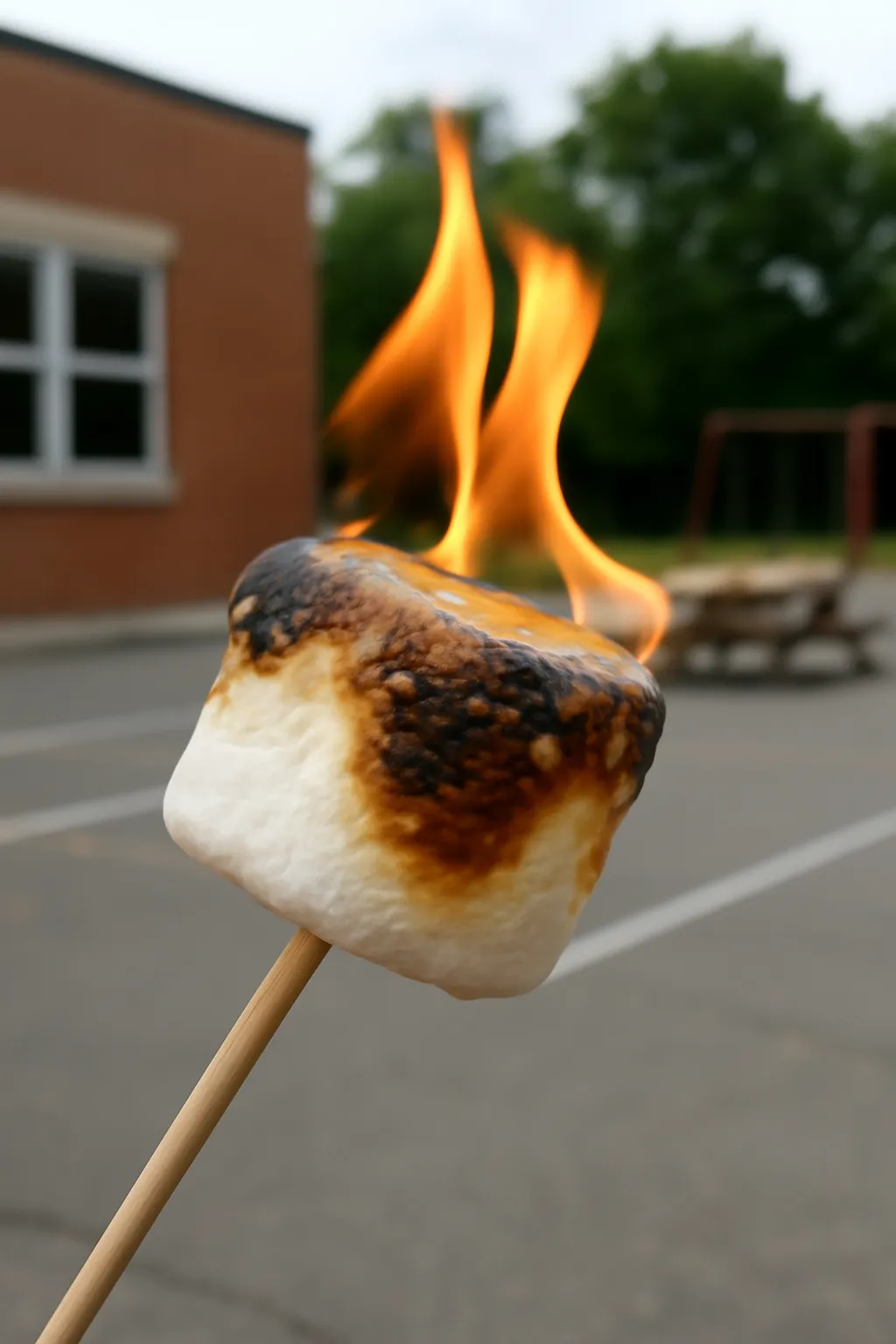What’s the story behind that burning marshmallow at your local elementary school event? Why are kids everywhere obsessed with the Marshmallow Challenge? And more importantly—what’s the right way to bake a marshmallow to golden perfection? Join us as we dive into one of the fluffiest, yet surprisingly meaningful schoolyard trends of the year.
Marshmallow
At first glance, a marshmallow might seem like nothing more than a sugary snack. But to children—and many nostalgic adults—it’s a symbol of warmth, fun, and a little bit of science. The act of roasting a marshmallow, especially in the setting of an elementary school gathering, combines culinary curiosity, sensory delight, and often, accidental flames!
Burning marshmallows became a bit of a legend at Jefferson Elementary last spring. During a supervised outdoor science day, students learned about thermal reactions through the safe roasting of marshmallows. What happened next was a delight: several students discovered that allowing the marshmallow to catch fire created a caramelized, crunchy shell that cracked to reveal molten sugar. The “burnt marshmallow” became the unofficial treat of the day.
Marshmallows are essentially sugar, water, and gelatin whipped into a spongy consistency. When exposed to heat—whether slow-roasted or caught in flames—sugar undergoes caramelization and Maillard reactions, creating complex flavors and textures. A gentle roast brings out a nutty, vanilla warmth. A burn? That’s smoky, bitter-sweet perfection for some.
Why does this matter in a school setting? Surprisingly, it becomes a platform for teaching chemistry, safe fire handling, and even emotional expression. Children who might shy away from classroom discussions often engage confidently when tasked with a skewer and a marshmallow.
One teacher I spoke to, Ms. Anderton, said: “We’ve had more constructive conversations about heat transfer and food chemistry during one marshmallow roast than in a whole week of lessons.”
Want to understand more about what’s really happening in that gooey puff?
👉”Marshmallow Chemistry Explained”👈
Marshmallow Challenge
You might be surprised to hear that one of the most engaging STEM activities for kids is named after marshmallows—but not in the way you’d think. The Marshmallow Challenge isn’t about fire or food. Instead, it’s about design thinking and creativity.
Originally developed by Tom Wujec, the Marshmallow Challenge involves teams constructing the tallest freestanding structure using spaghetti sticks, tape, string, and one marshmallow. The twist? The marshmallow must sit on top.
Why include a marshmallow? Because it’s deceptively heavy for its volume—and it exposes the flaws in overly ambitious structures. Kids learn quickly that their “perfect” designs often collapse unless they adapt, collaborate, and prototype rapidly.
At Parkside Elementary, the Marshmallow Challenge was introduced during an innovation week. I watched as a group of fourth graders struggled with spaghetti engineering, groaned at collapsing towers, and finally celebrated a humble 11-inch design that held the marshmallow like a crown. The challenge taught them resilience, teamwork, and the importance of iteration.
Here are the top takeaways from the Marshmallow Challenge:
-
Prototyping matters – Kids who built multiple versions did better than those who planned excessively.
-
Teamwork over talent – Mixed-ability teams outperformed groups of top students.
-
Failure is part of learning – Seeing their towers fall helped students adapt and succeed.
By the end of the session, students weren’t just talking about marshmallows—they were using words like “stability,” “support,” and “load-bearing.” That’s the beauty of embedding learning in playful scenarios.
To try the Marshmallow Challenge at home or in your classroom:
👉”Marshmallow Challenge Instructions”👈
How to bake marshmallow
Now let’s get down to the tasty business—how do you actually bake a marshmallow to perfection? While many know the joy of roasting over a campfire, there’s a surprising art and science to achieving that flawless golden exterior and molten center.
Here’s the foolproof process:
-
Use a steady heat source – A small flame, like from a gas stove or low campfire, is ideal.
-
Rotate slowly – Hold your marshmallow about 5 cm above the flame and rotate constantly to avoid direct charring.
-
Watch for the crust – Once it turns golden brown, pull it away and let it rest a moment before biting in.
But what if you want to go further? Here are 5 unique ways to bake a marshmallow
-
Oven-baked marshmallows – Place on a parchment-lined tray at 200°C (392°F) for 3–4 minutes.
-
Blowtorch brûlée – For gourmet marshmallows, lightly torch them to caramelize the surface.
-
Air fryer marshmallows – Use at 180°C (356°F) for a controlled, low-mess roast.
-
Skillet toast – Pan-sear marshmallows over medium heat for an indoor surprise.
-
Microwave with crackers – Perfect for s’mores; 10–12 seconds will do.
During last winter’s indoor recess at Lincoln Elementary, I helped organize a marshmallow baking activity using small toaster ovens. Students compared results based on baking time, distance from the coils, and different brands of marshmallows. They even kept data logs. One 5th grader told me, “I used to just burn mine on purpose. Now I want that golden swirl every time.”
Ultimately, learning how to bake a marshmallow is about more than dessert—it’s about observation, patience, and a little trial and error.
Looking to take your marshmallow baking skills to the next level?
Conclusion
A humble marshmallow might seem like just a sugary treat—but as we’ve seen, it has the power to teach science, inspire creativity, and bring people together. From the charred puff at a school event to the soaring spaghetti tower in a classroom challenge, marshmallows are quietly becoming icons of hands-on learning and joyful experimentation.
As Albert Einstein once said, “Play is the highest form of research.” And when play involves something sweet and slightly burnt? Even better. Whether you’re baking, building, or burning (safely), the marshmallow is here to teach, surprise, and delight.






